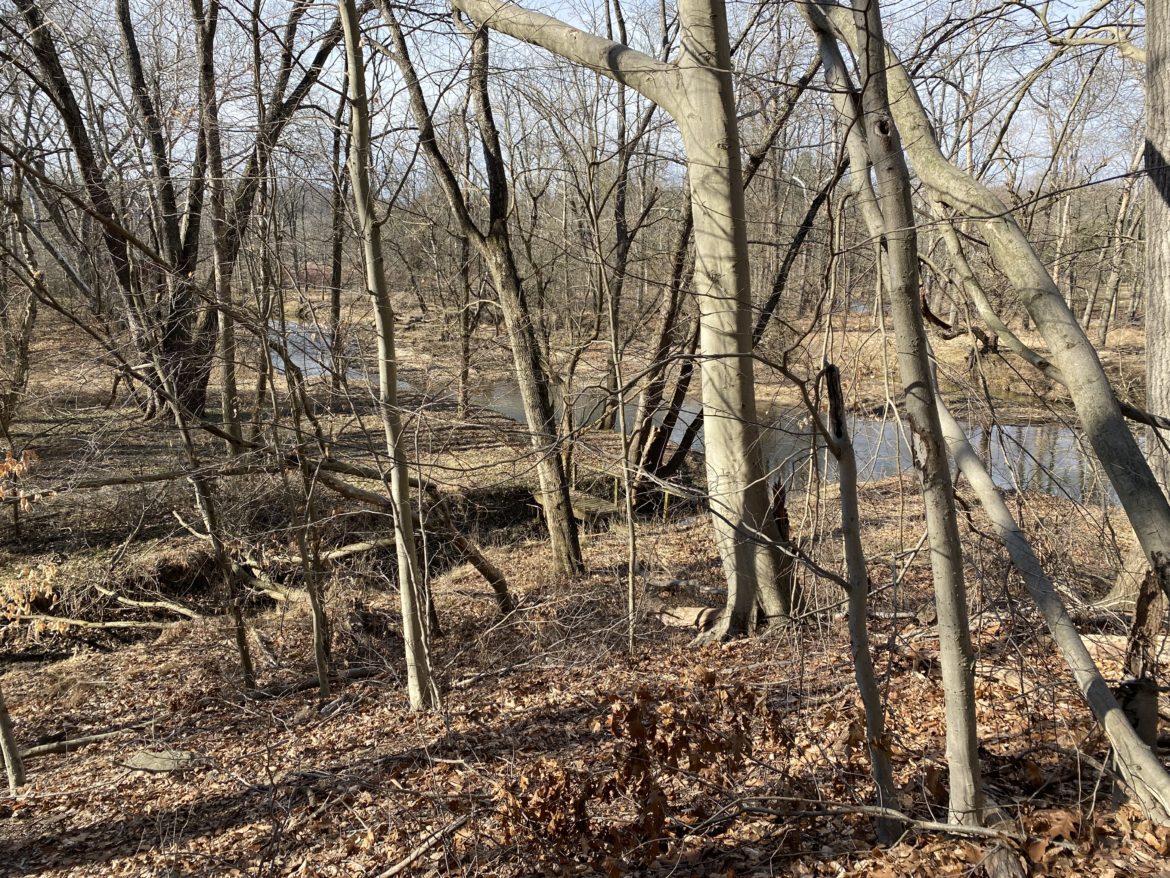On a balmy winter afternoon in mid-February, Jim White, Entomologist and Senior Fellow for Land & Biodiversity Management for Delaware Nature Society, met with students from his virtual “Winter Insects” class for a hands-on field trip at Ashland Nature Center. His earlier class session had focused on different strategies insects use to survive the winter. In Jim’s words, they deal with winter in one of three ways. They can “wait it out” (hibernate; called diapause in insects), “deal with it” (stay active), or “get out of here” (migrate). His lecture slides used beautiful insect photographs to demonstrate these winter survival strategies. The field trip gave class members a chance to discover how winter insects survive, up close and personal.
Cool Insect Observation Tools
Jim started off the field trip adventure from the back of his SUV. He circulated some pretty cool insect catching and observational tools among the students. One of these was a Berlese Funnel, used to extract insects from moss, soil, and litter samples. It works on the principle that insects and other arthropods living in moss, soil, and litter, will respond negatively to light. A light source fixed above the unit forces the insects to move downward into the funnel. This causes them to fall into the lower container for better observation.
Prior to the field trip, Jim collected some moss samples in the Berlese funnel in an effort to capture some snow scorpion flies. After a new snowfall, these tiny creatures (5mm) actually emerge from the moss and come to the surface to find a mate, or move to another moss patch. Unfortunately, none were present in this sample. However, Jim’s description of the scorpion flies motivated his students to look for them the next time it snowed!
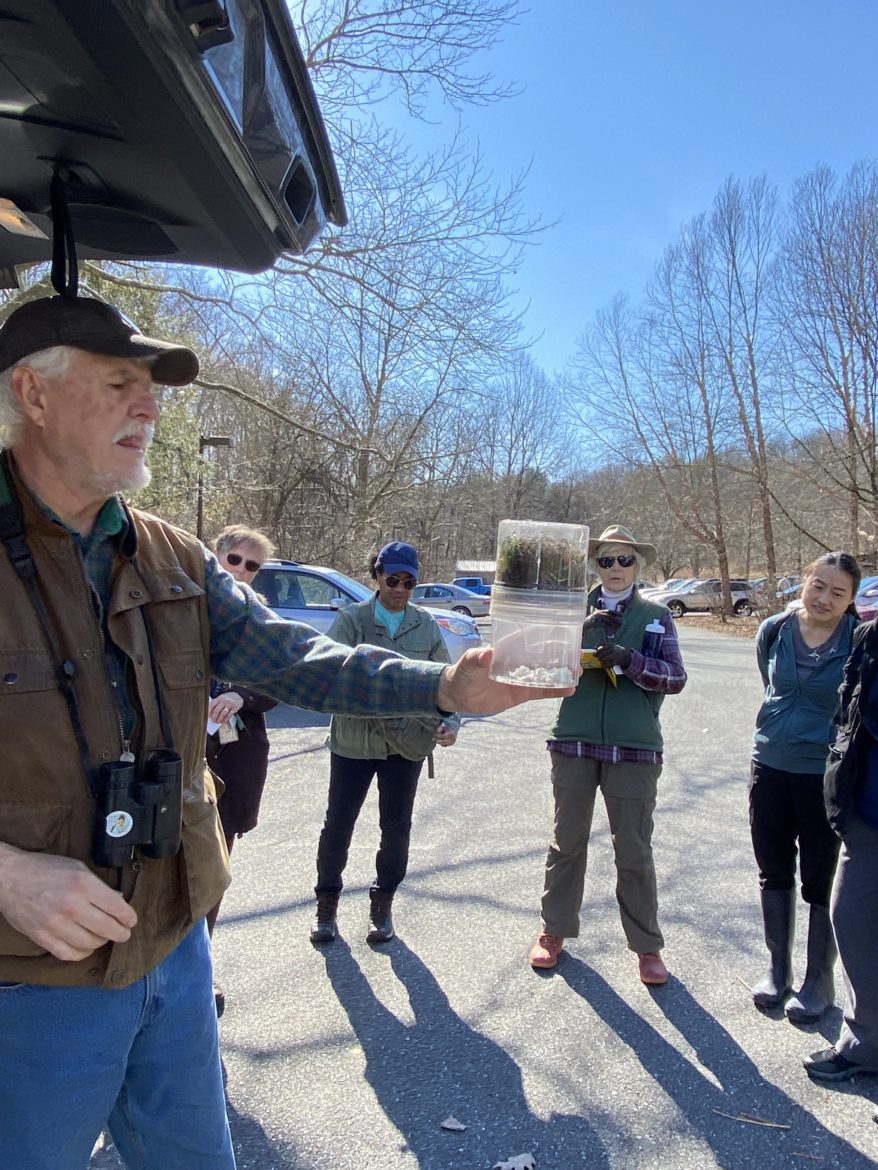
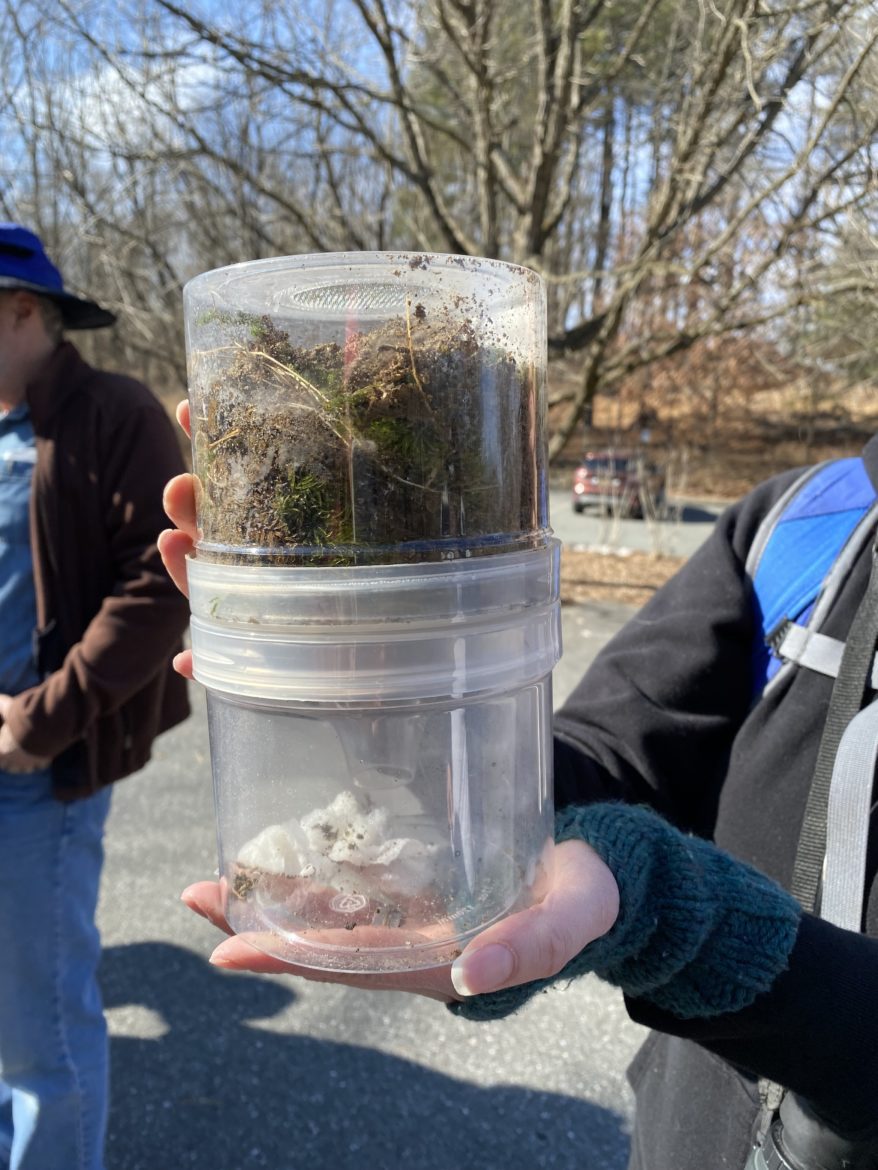
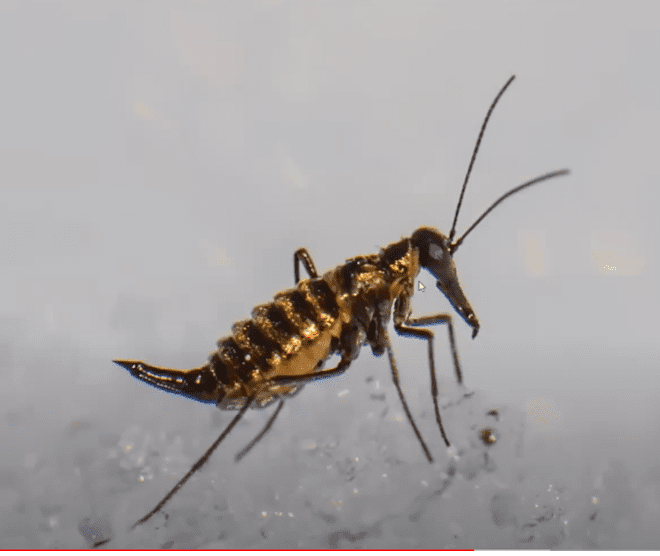
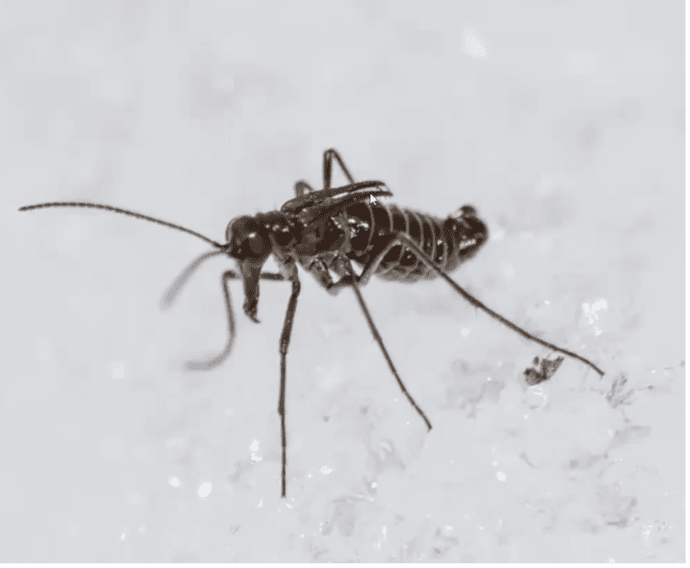
Next, Jim circulated another clever tool (a “Creature Peeper”) amongst the group. The device was a capped water container with a magnifying glass on the side, allowing one to see the small wriggling creatures up close and personal. The water in this unit contained numerous globular Collembolas previously collected by Jim. Before leaving the parking lot, Jim provided the group with glass vials, capped test tubes, and some magnifying glasses. Students eagerly picked them up, ready to collect and observe specimens as they walked about Ashland Nature Center. On such a warm winter day, the group would likely see some insects that overwintered as adults. Or, they might see some insects that recently emerged from another overwintering phase (such as an egg, larvae, or pupa).
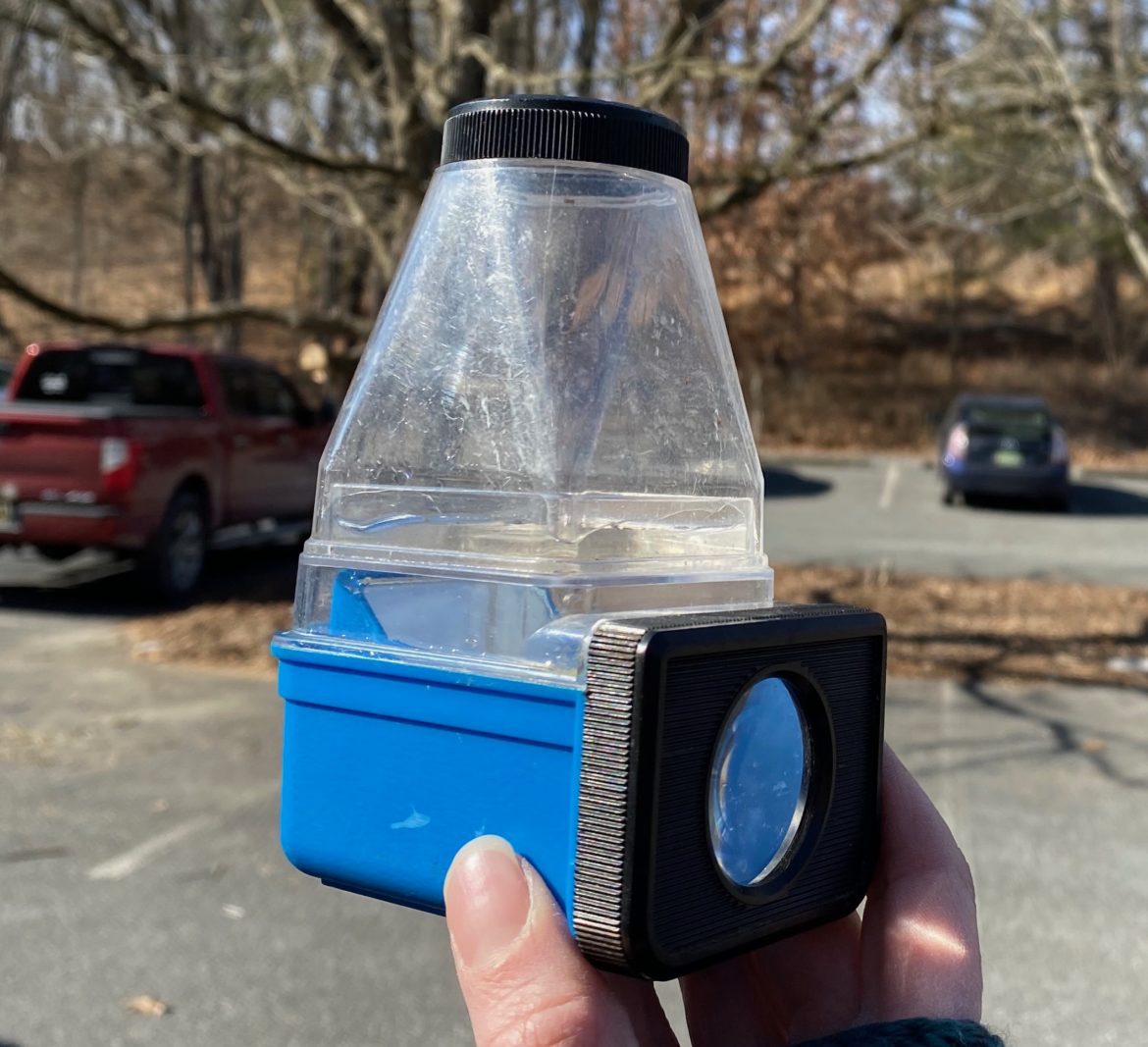
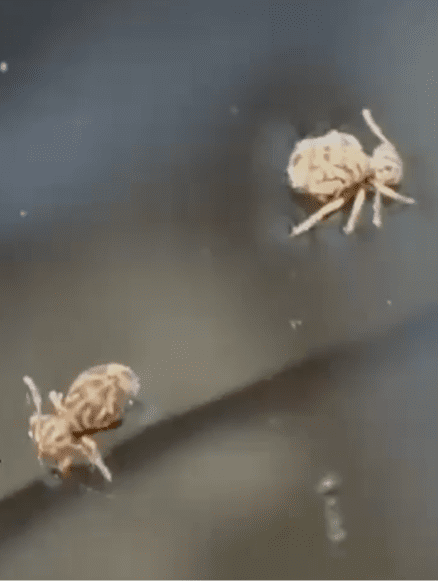
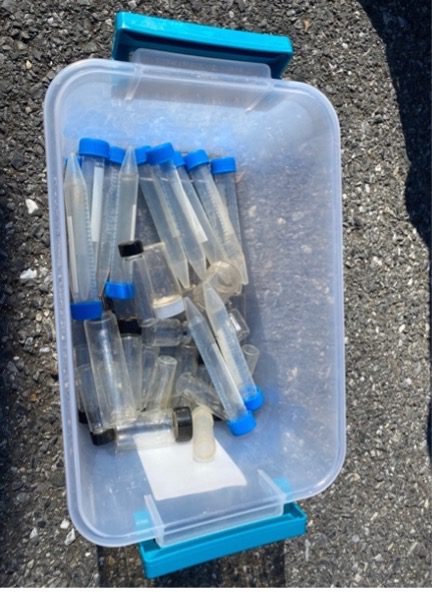
Searching for winter insects in the floodplain
One of the first spots we noticed insect activity was on the trunk of a large sycamore tee. If not carefully examining the bark up close, these tiny adult stoneflies could have easily gone unnoticed. With Jim’s expert knowledge of where to look and what to look for, the group found many of these little creatures making their way up and down the tree trunk. Some students were able to coax the tiny flies into a sample tube for closer examination.
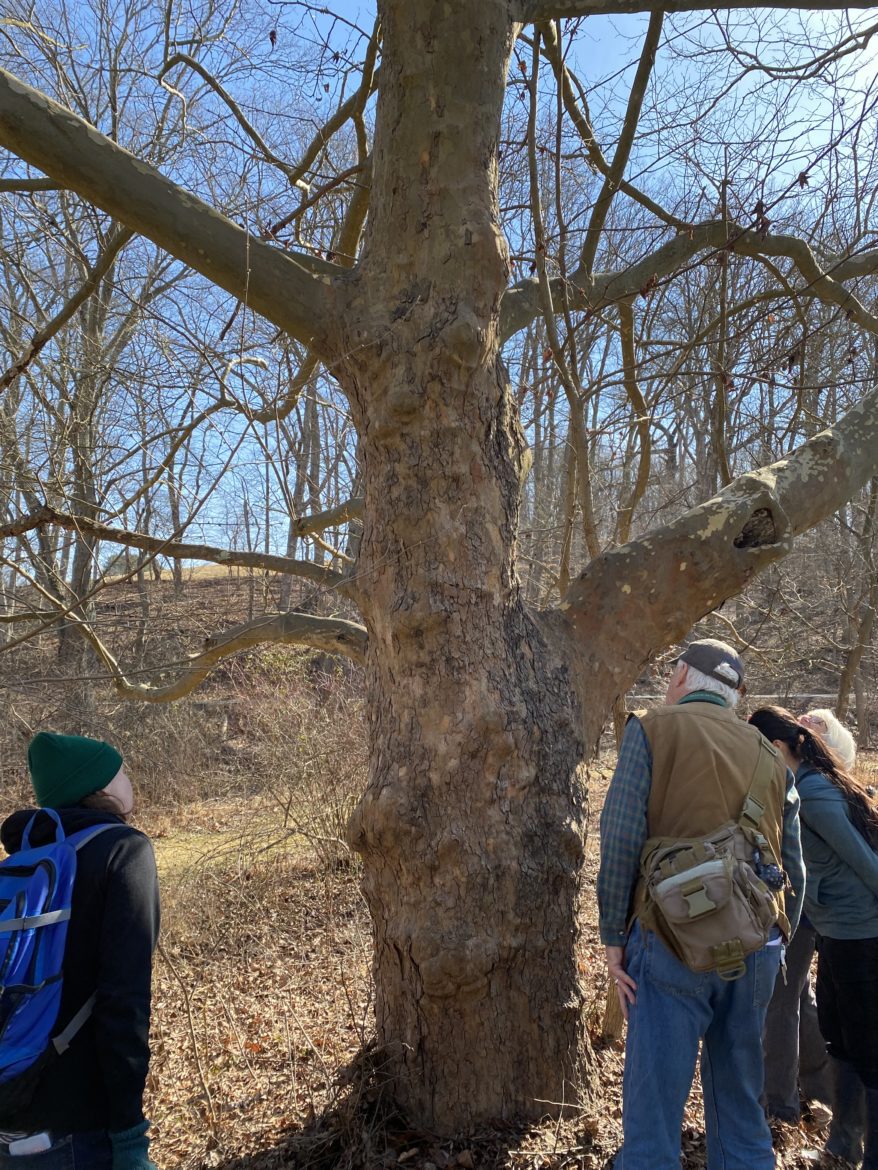
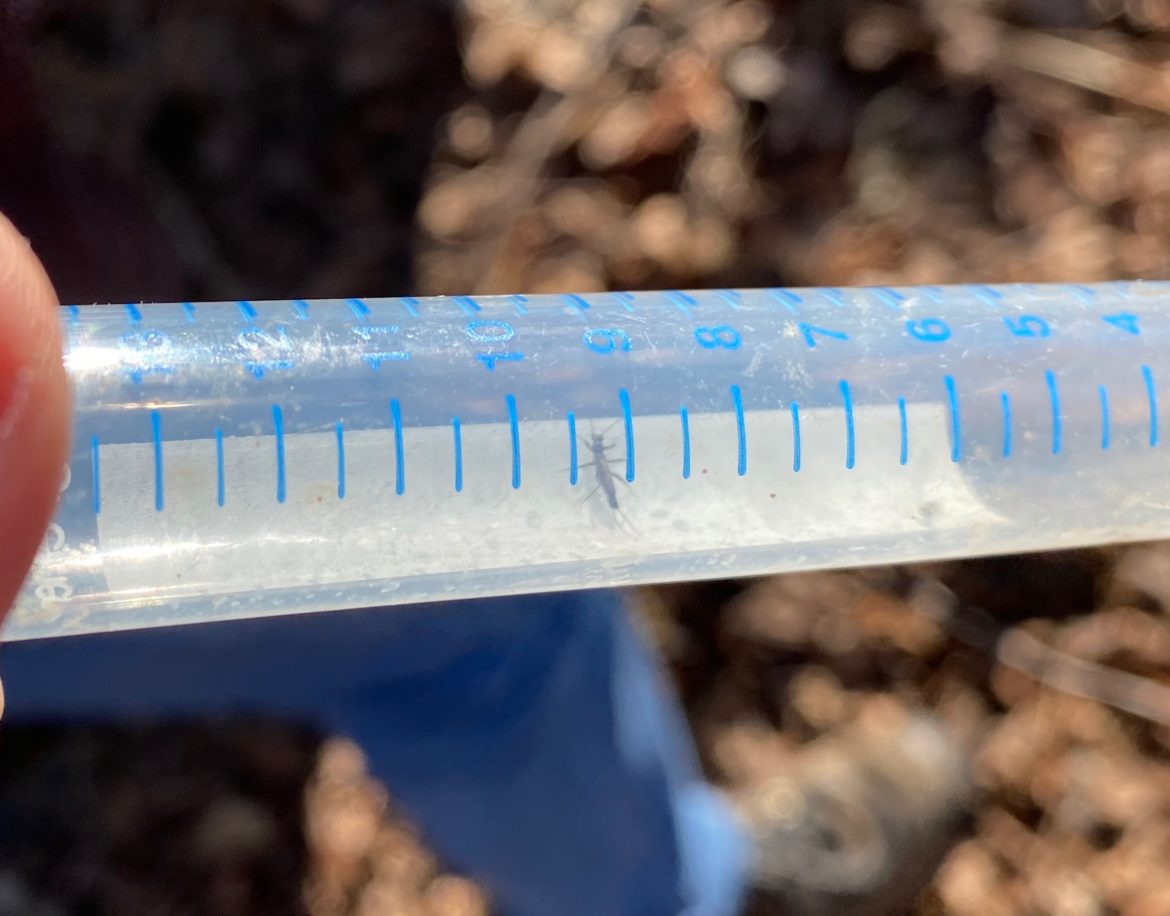
What happened to the Ash Trees?
As the group walked through the flood plain, Jim pointed out the widespread damage to most of the Ash trees in the area. Most Ash trees in northern Delaware are dying from the damage inflicted by the larvae of the Emerald Ash Borer. Emerald Ash Borers are an invasive beetle that were introduced from Asia and first discovered in the United States in 2002. The larvae feed under the tree bark, eventually damaging the tree’s ability to transport moisture and nutrients from the soil to the leaves. This ultimately causes ash tree decline and death. Various species of woodpeckers feed on Emerald Ash Borer larvae. The woodpeckers make holes in the bark, causing light colored patches, easily seen on the trees as we walked by.
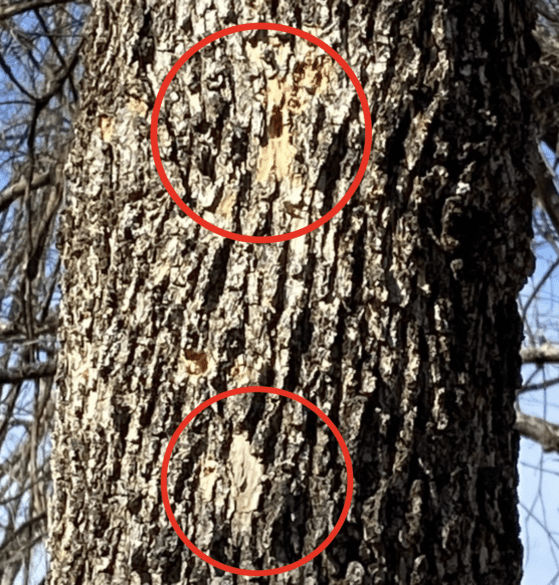
As the group moved on to the boardwalks over the stream, Jim handed out nets. Each student collected various insect specimens by looking under rocks, in the mud, and under piles of leaf litter. Students placed any specimens they caught into a white plastic tub for observation and identification.
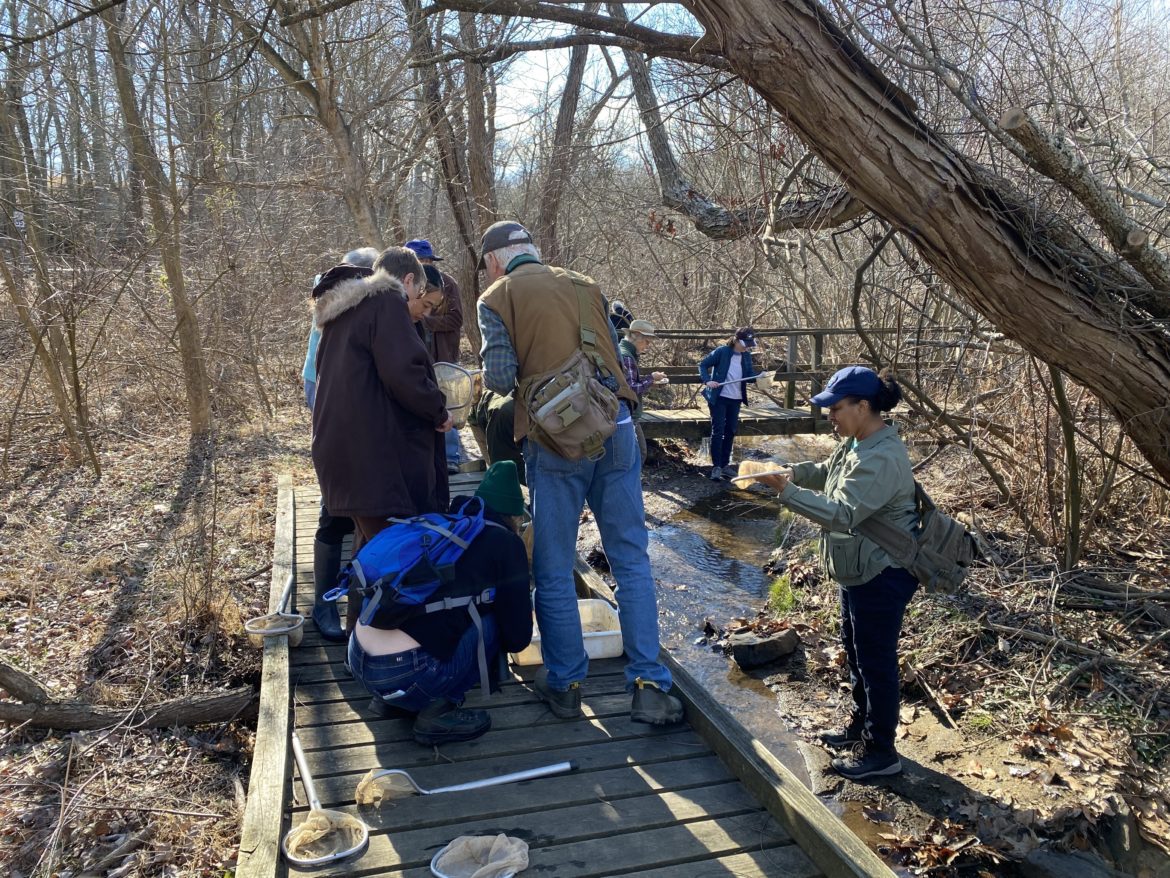
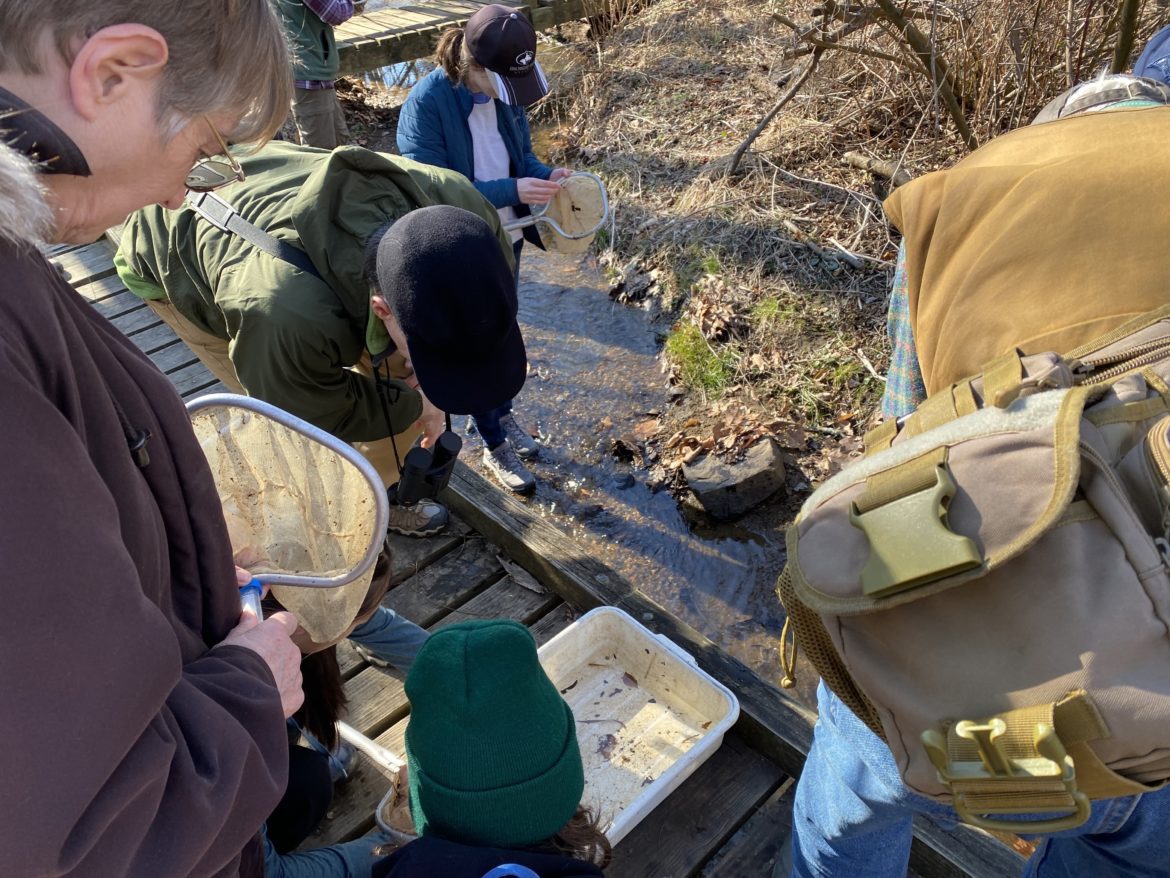
After several minutes of searching the stream bed, the students managed to catch an impressive assortment of insect larvae and other creatures. Some of the more notable specimens the students uncovered are featured in the following photos.
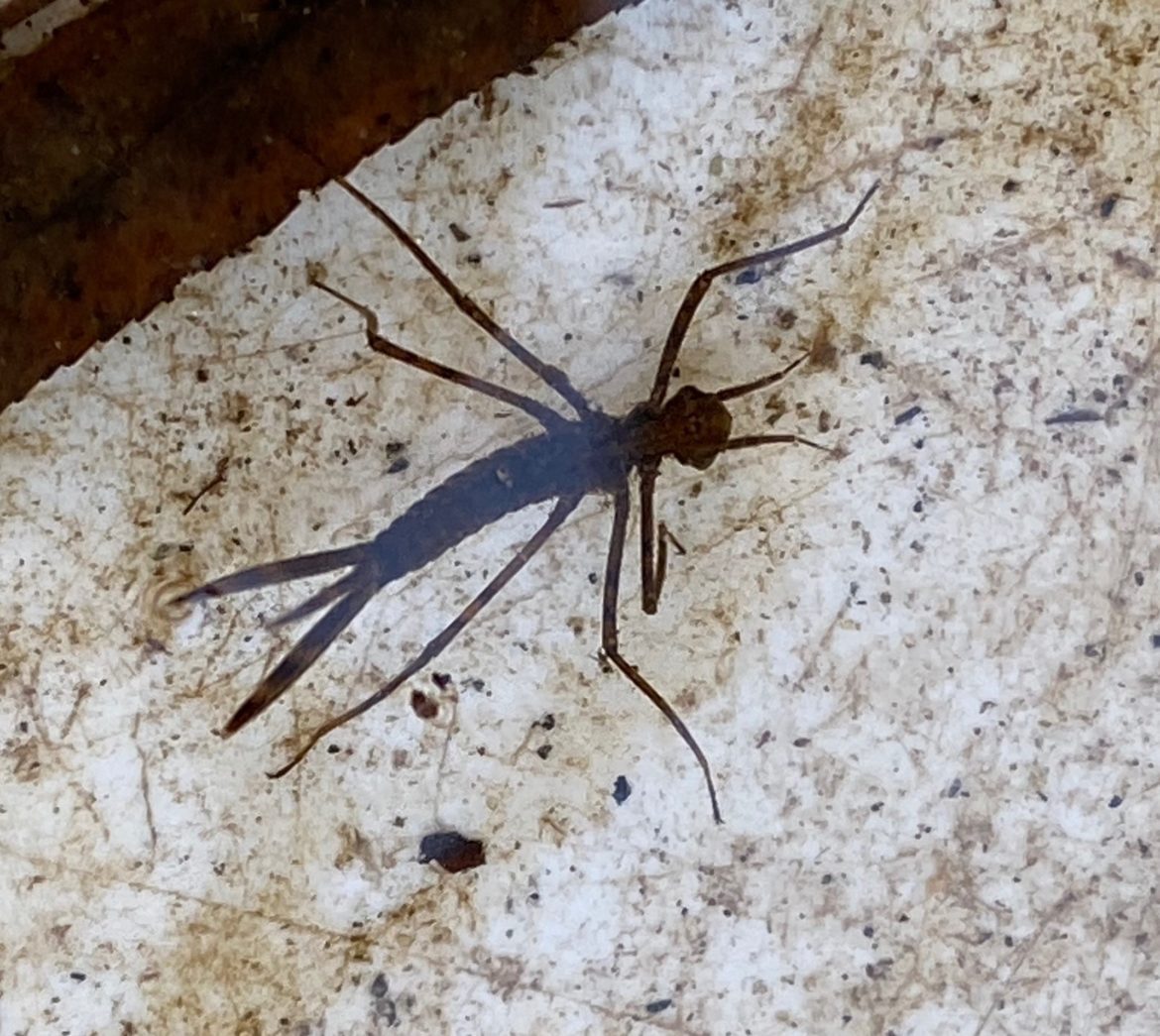
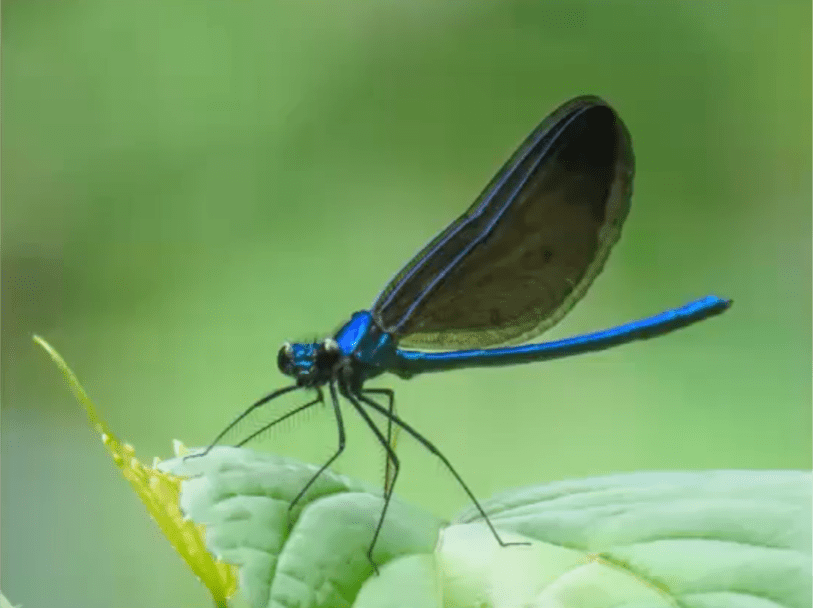
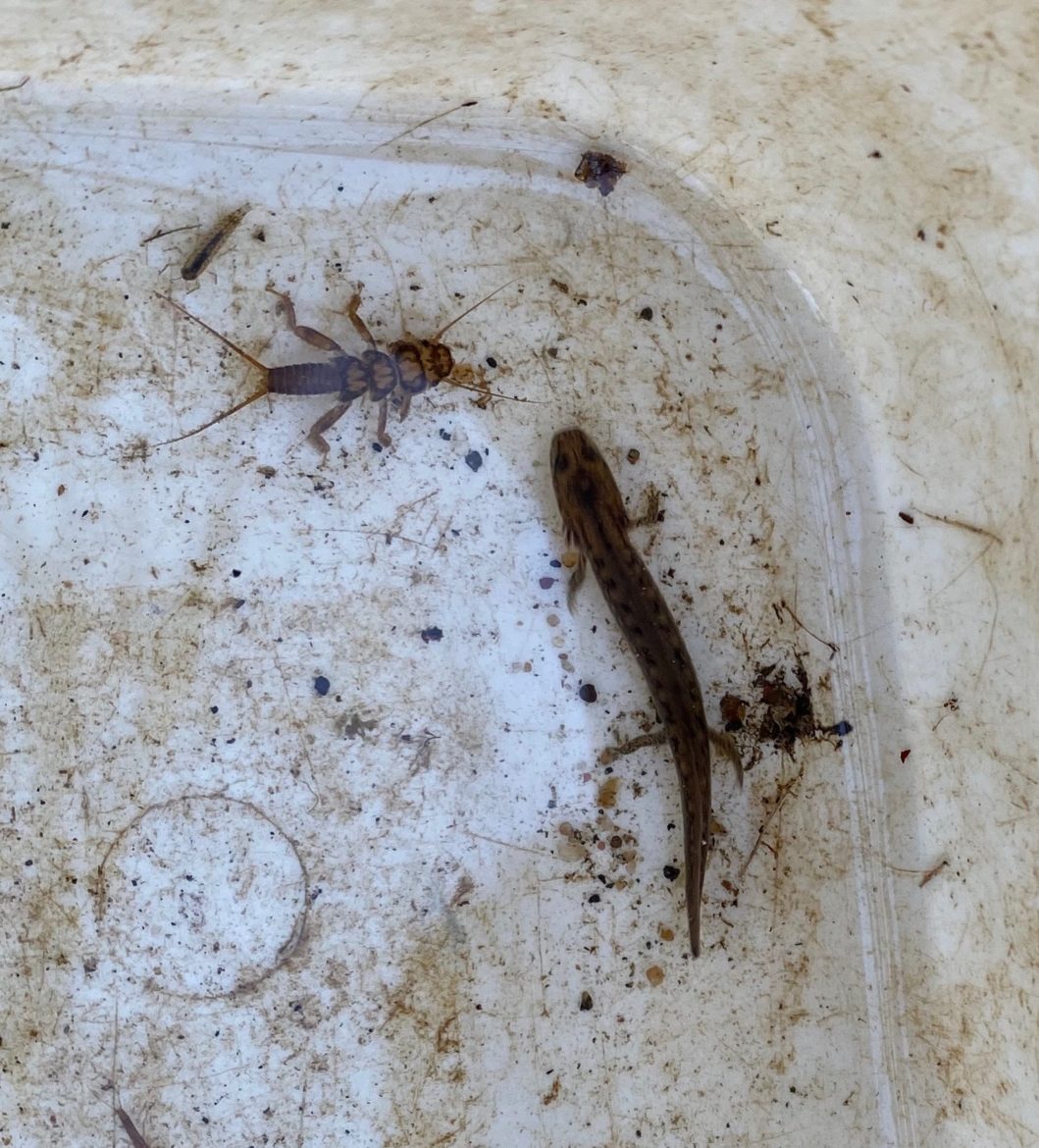
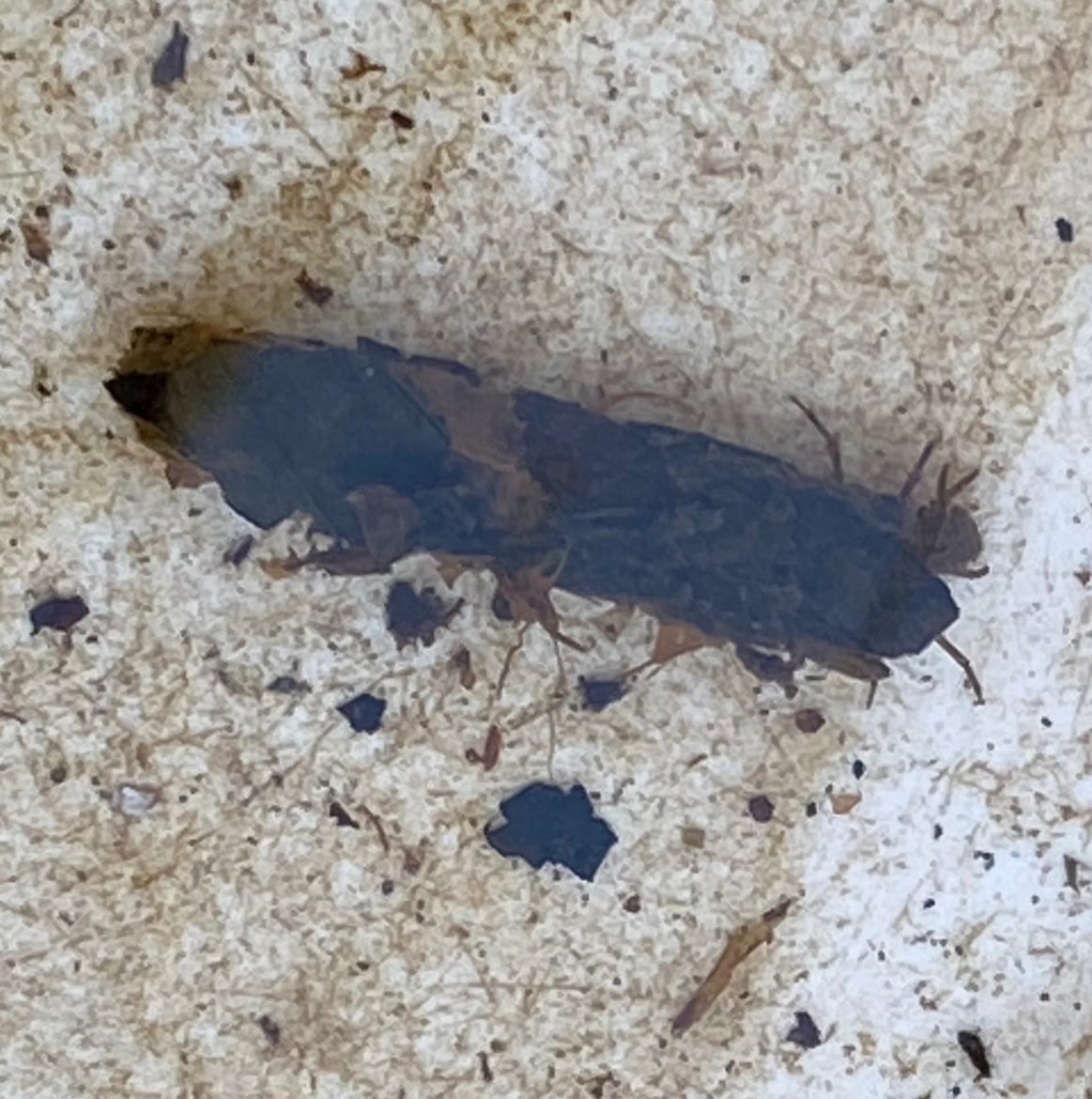
Searching for winter insects in the dry upland forest
Walking into a drier upland forest, Jim showed the group how to look for overwintering insects by turning over logs and rocks. By using this technique, the students found and photographed lots of interesting specimens. Once done investigating, Jim made sure to remind everyone to put disturbed logs and rocks back into place.
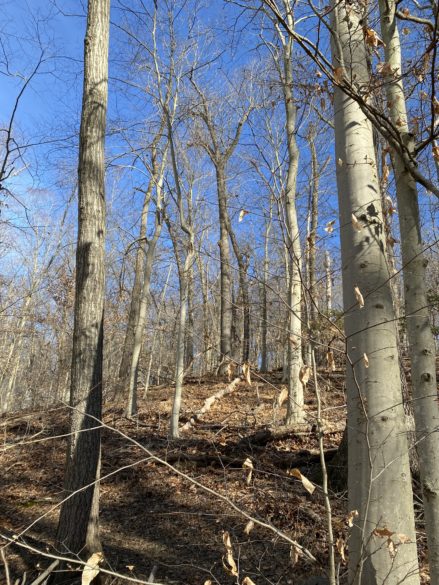
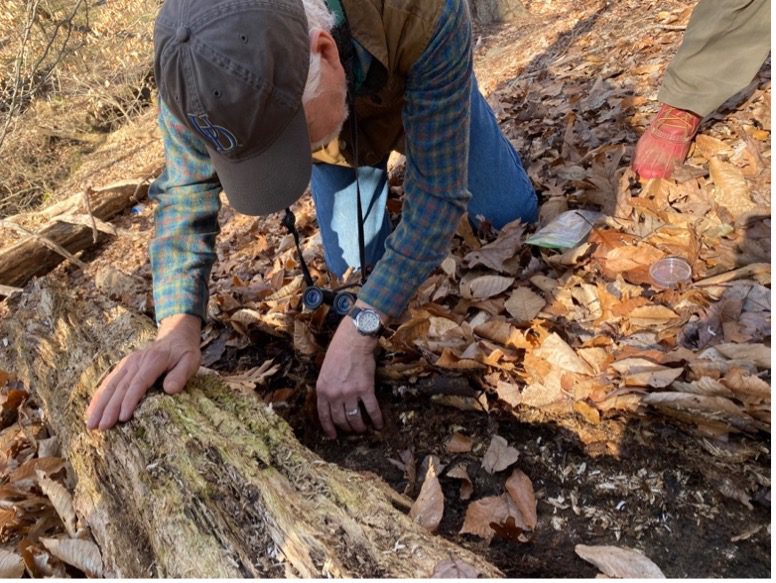
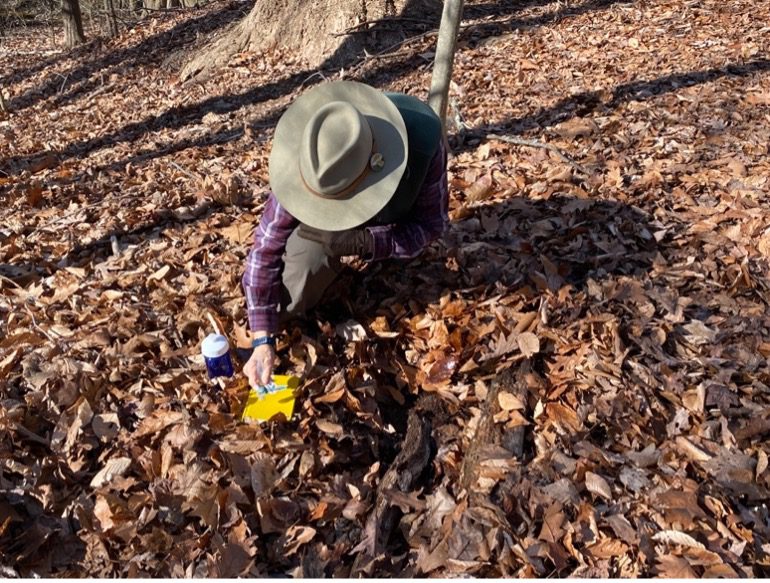
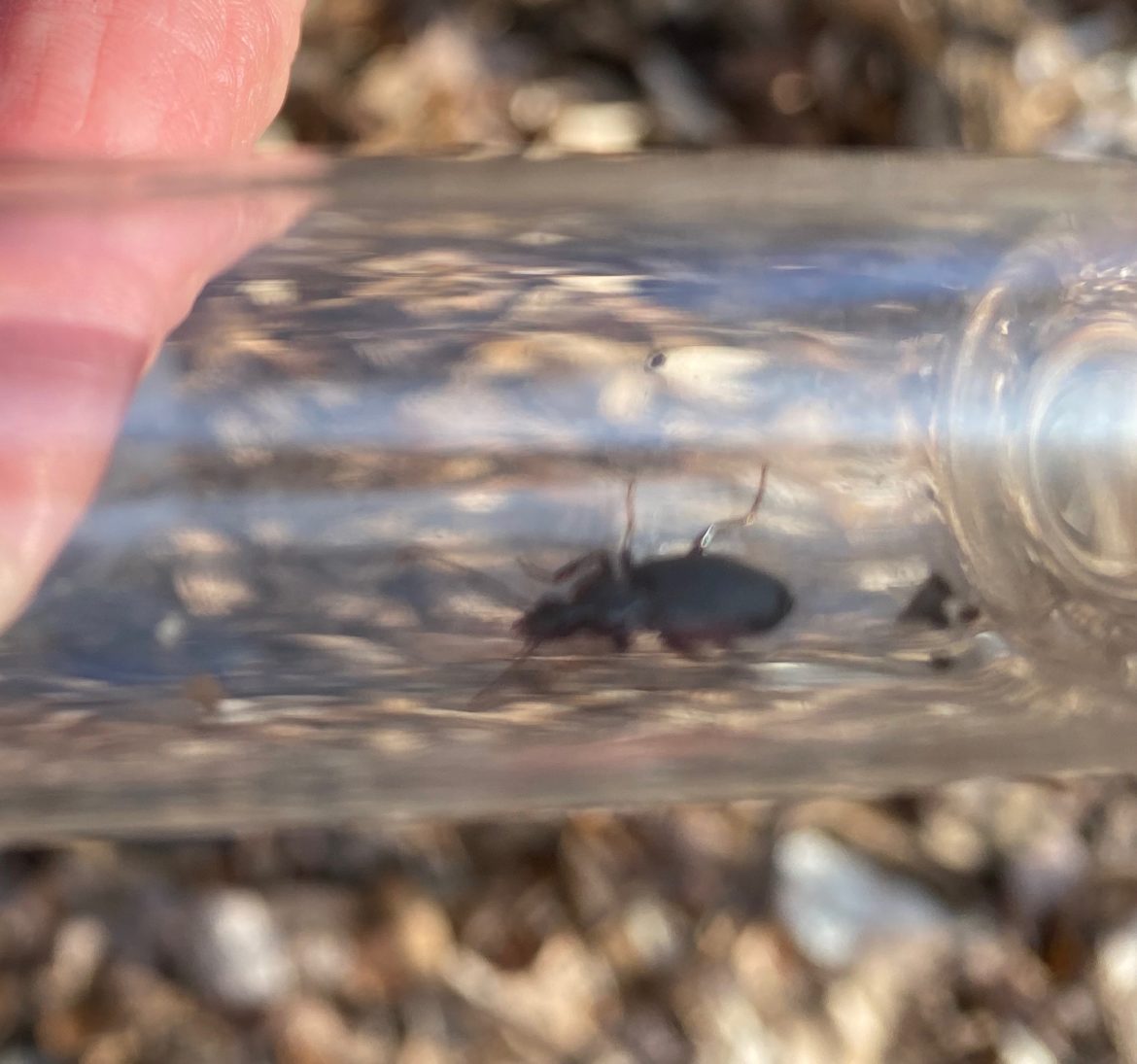
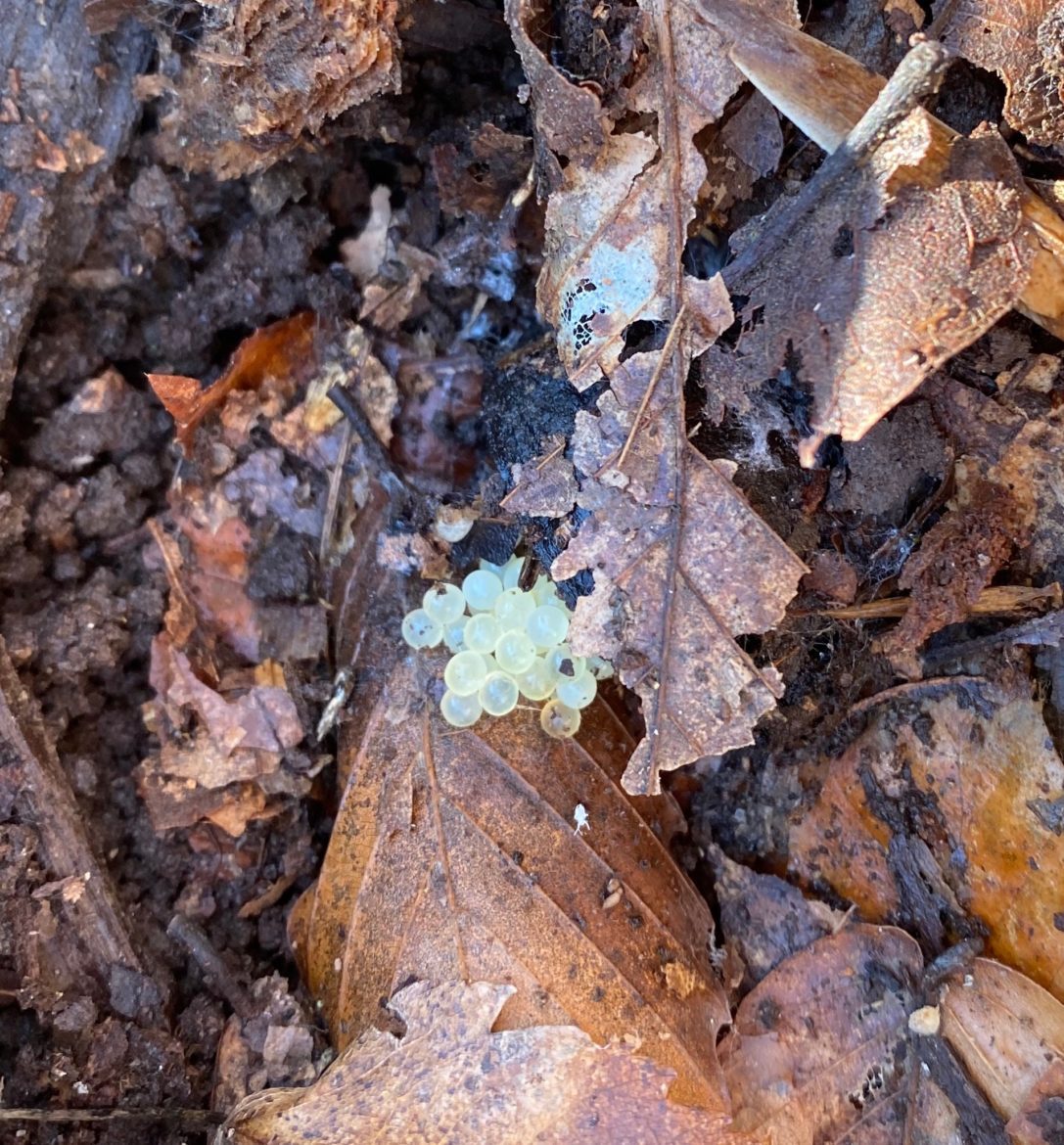
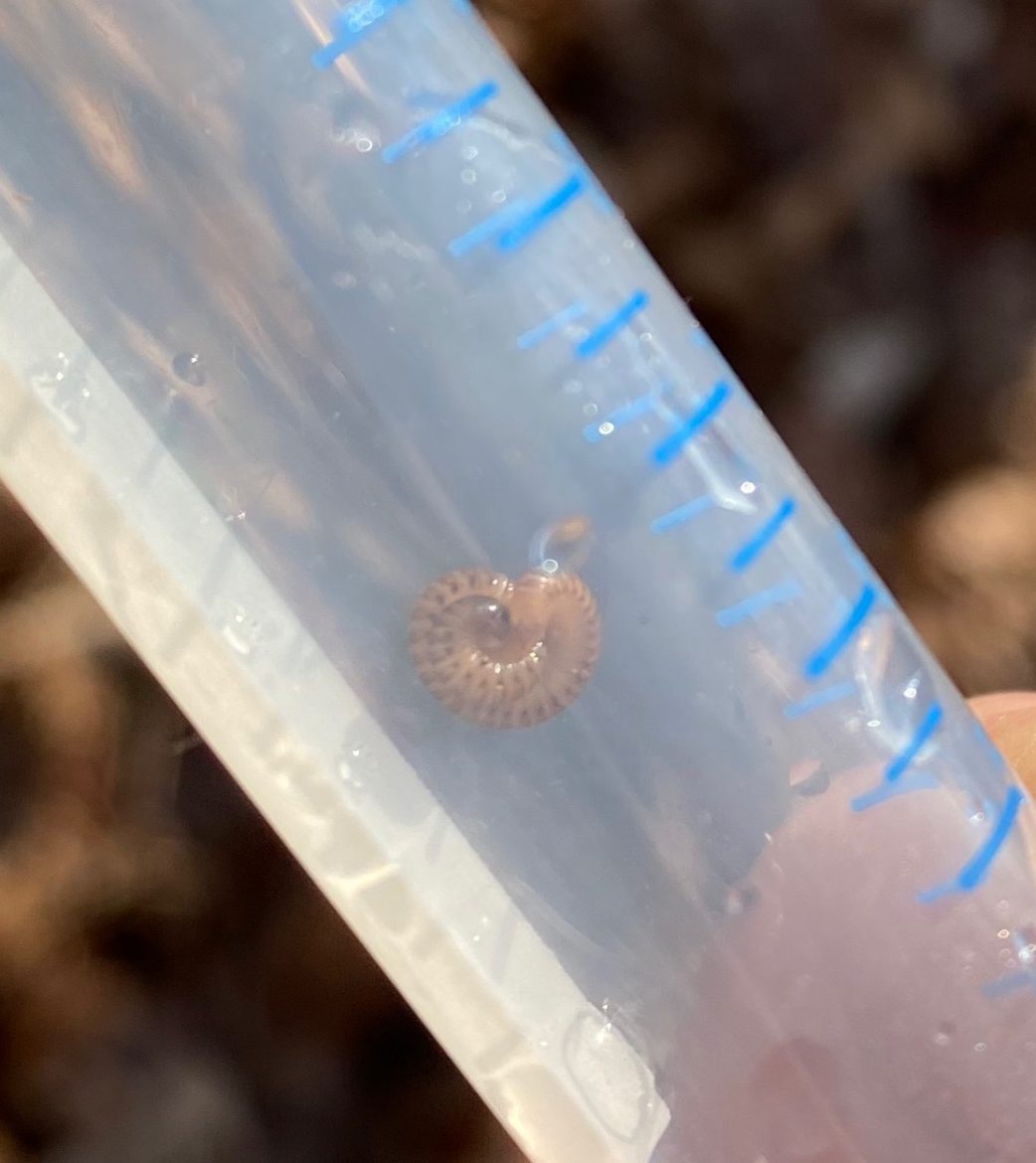
Near the end of our trip, Jim turned his attention to tree trunks. He showed the group how to search the bark for eggs laid by insects in the previous fall. After successfully finding and photographing several different egg types, the group made sure to destroy any of the invasive Spotted Lanternfly eggs found along the way. Have you found one? How to report Spotted Lanternfly sightings.
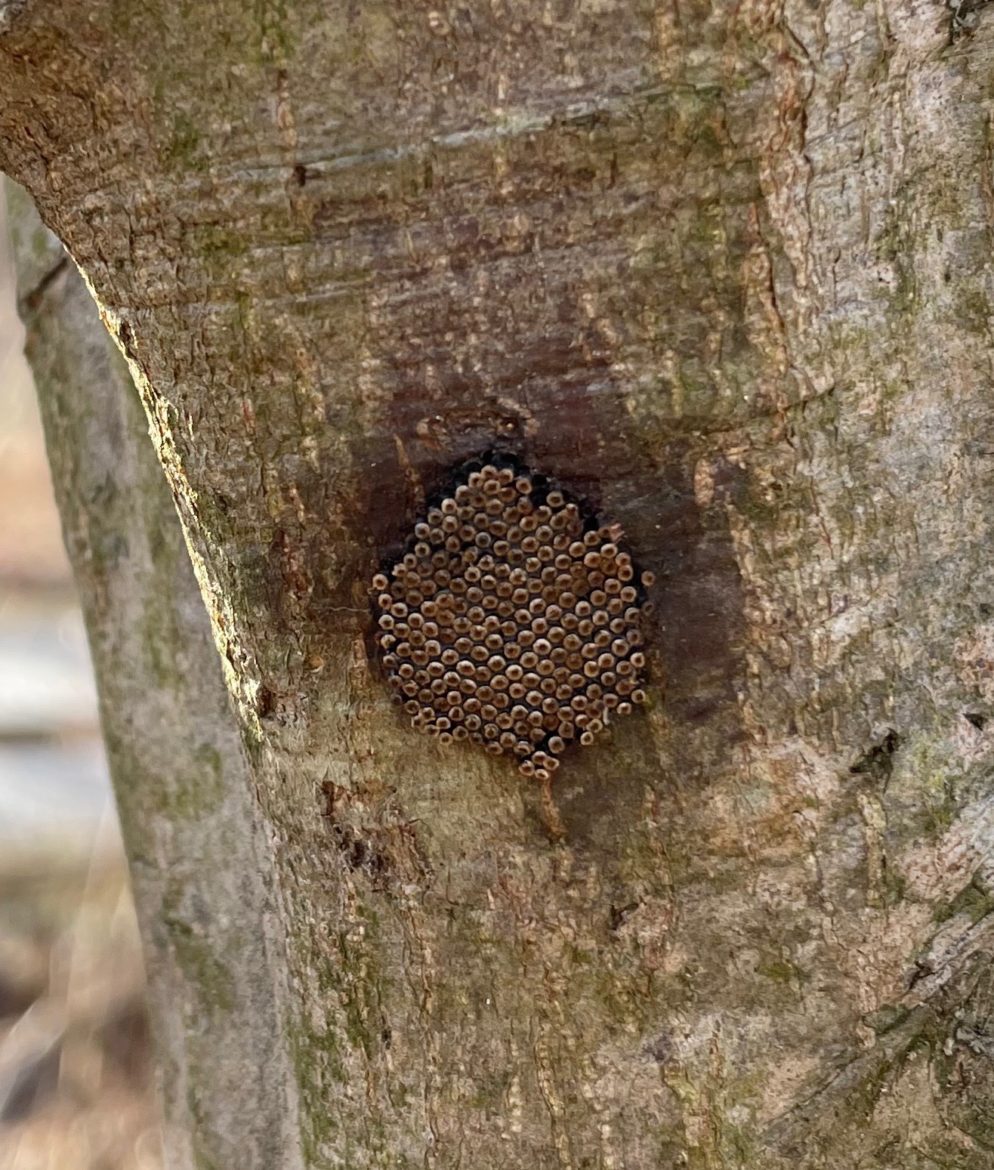
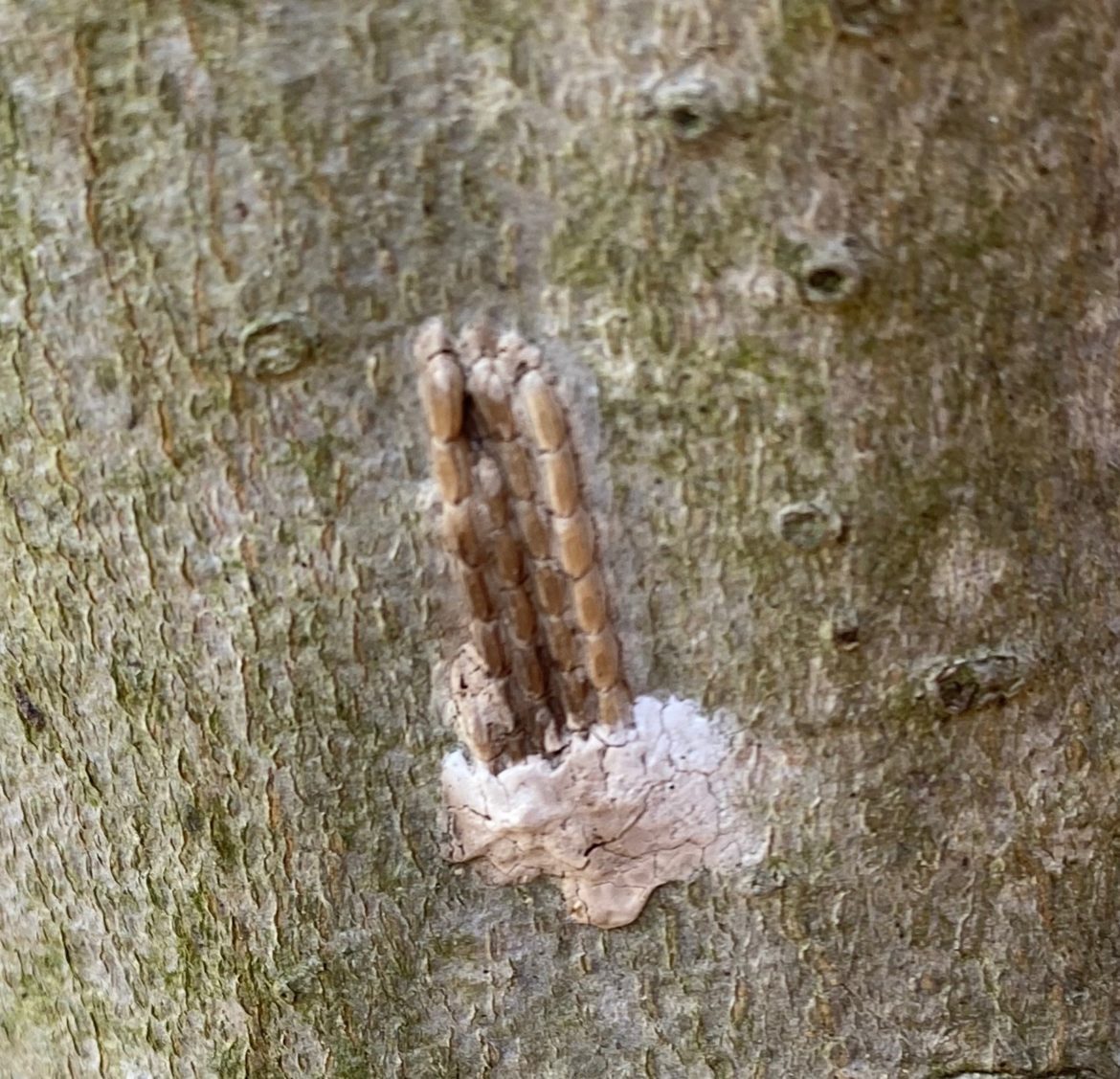
After spending time collecting specimens in the upland forest, the group headed back to the parking lot. They followed the forest trails along the meandering Red Clay Creek, enjoying the spring-like warmth of the afternoon sun. All agreed that it had been an enjoyable and informative field trip at Ashland Nature Center. This group of curious nature lovers got a special opportunity to enjoy the miniature wonders of the winter insect world.
